Abstract
Etisalat is a leader in the telecommunication industry in the UAE as it holds 55% of the market share. Even though historically, customer satisfaction with the services of the company was high, currently, more and more clients express their dissatisfaction with Etisalat online. A review of the literature revealed that decreased customer satisfaction could be connected with the poor performance of the contact centre.
A survey was conducted to understand what the current level of performance of Etisalat’s contact centre in UAE is and how it affects customer satisfaction. The results revealed that the contact centre of the company suffers from a high level of variance in service provision. Additionally, the research concluded that call resolution level has a significant impact on customer satisfaction. Implications of the findings are discussed, and appropriate recommendations are included.
Introduction
Etisalat is a vibrant and multiple award-winning telecommunication service in the United Arab Emirates (UAE). It is the leader in the telecom sector known to deliver value to its customers throughout its history. The company managed to keep a high rate of customer satisfaction through the years. However, recently, the feedback on the Web signalled a decrease in customer satisfaction. While the majority of complaints were connected to the quality and price of the internet connection, some customers mentioned that the customer support of the company was difficult to reach. At the same time, the specialists of the call centre in UAE were often unable to solve the problem during the contact and the waiting time was too long.
The first two lean principles state that in order to be effective and generate adequate revenues, a company should be focused on the customer and all the decisions were data-driven. The Six Sigma model aims at decreasing variation in the quality of provided products or services. Therefore, the present paper aims at applying quantitative methods to study the correlation between the variation in service level of Etisalat’s call centre in UAE and overall customer satisfaction. Applying such methods will help to generate evidence of the correlation between the two matters and formulate recommendations to improve customer satisfaction.
The central research questions are what the current level of performance of Etisalat’s contact centre in UAE is and how it affects customer satisfaction. The research process and research onion for the present study are presented in Appendix 1 and Appendix 2 correspondingly.
Literature Review
Etisalat is a leader in the telecom industry in the UAE with little competition. The telecom market of UAE consists of two major players, Etisalat and Emirates Integrated Telecommunications Company (Du), taking up almost equal shares of the market. The central characteristics of the market are high-level GDP per capita, a high level of mobile penetration, a swiftly growing internet user penetration and a steady level of fixed-line penetration (Ellam, 2008). In 2008, the company commanded over 80% of the telecom market; however, after the emergence of Du, the market share decreased to 55% (Etisalat, 2019b).
The UAE telecom sector is considered the least liberalized due to the strict regulations in the sphere. The government owns a significant proportion of Etisalat’s and Du’s shares and exercises strict control over the companies and competition (Ameet & Willis, 2016a). It even restricted the Voice over Internet Protocol (VoIP), making the citizens of the UAE unable to use Skype, Viber, WhatsApp, or FaceTime (Ameet &Willis, 2016a). At the same time, the prices of the telecom services are the highest in the United Arab Emirates because the royalty fee is 50% (Ameet &Willis, 2016b).
Etisalat demonstrates stable financial performance in recent years. In 2015, the company generated over 51.7 billion AED in revenues with more than 8.3 billion AED in net profit (Etisalat, 2016). In 2018, the financial performance improved slightly, with 52.4 billion AED in revenues and 8.6 billion AED in net profit (Etisalat, 2019a). It has the largest LTE and FTTH coverage (99%) in UAE (Etisalat, 2019b). The company identifies itself as customer-centric and pays special attention to social responsibility (Etisalat, 2019b). Etisalat aims at becoming a leaner and more agile organization by utilising the latest technologies and methodologies (Etisalat, 2019a).
Historically, customer satisfaction with the services of the company was high. In 2003, Gulf News reported that approximately 98% of customers were satisfied with Etisalat’s products and services in UAE (Carvalho, 2003). However, in 2019, the vast majority of customers are disappointed with the current telecommunication administrations and quality of services of both Etisalat and Du (Alshehhi, 2019). The problem of customer satisfaction decline is attributed to coverage of the network, SMS quality, mobile data internet, and market structure (Alshehhi, 2019).
Customer support services are also vital determinants of the level of customer satisfaction. According to Roos and Edvardsson (2008), some of the customers are particularly focused on customer support and communication with call centre specialists is of extreme importance to them. Customer support services are crucial as they are linked to the continuation of relationships with the customers (Roos & Edvardsson, 2008). Moreover, call centres are vital for receiving feedback from customers (Goffin & New, 2001). Therefore, it may be concluded that even though at present customer satisfaction is low, it can be improved by adopting Lean Six Sigma framework.
Research Methodology
Measures
The aim of the present paper was to study the correlation between the quality of services provided by Etisalat’s call centre and customer satisfaction. It was decided to create a questionnaire in Google Forms and ask Etisalat’s customers to respond to it. In order to measure the performance of the call centre, key performance indicators (KPI) needed to be identified. According to Zeisig (2020), contact centre managers need to evaluate up to 25 metrics to assess the efficiency of a customer support unit. In order to increase the response levels, it was decided to include only three KPIs, including call resolution, waiting time in line, conversation time. Together with KPIs, the respondents were asked to determine how satisfied were they with the services of the company on the scale from one to ten. The questionnaire is presented in Appendix 3.
Sampling and Procedure
A sample includes 30 randomly selected customers from a Facebook community of Etisalat. Participants of different ages and genders were sent a link to Google forms with a message explaining the purpose of the study and how the acquired data was expected to be used. The message also stated that by replying to the questionnaire, the person is understood to have given informed consent to participate in the study. The data was gathered and sorted using Google Forms and Excel.
Data Analysis
The data were analysed using statistical tools in Minitab software. The data were analysed using descriptive statistics and multiple regression analysis to understand the correlation between overall customer satisfaction and the service level of the call centre. A distribution table was created to understand the distribution of answers of the participants. After that, a linear regression model was created to include all three assessed KPIs to understand how they influence customer satisfaction. The results of the analyses were carefully assessed for errors and signs of bias.
Data Analysis and Results
Summary Reports
Summary report for how many customers resolved their problems after contacting the call centre is presented in Figure 1 below. According to the report, 22 out of 30 customers could resolve their problem, which implies that the call resolution level was 73%.
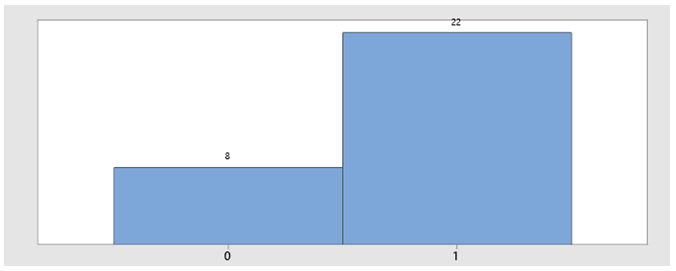
The matter of increased attention is the distribution of customer satisfaction, which is presented in Figure 2 below. According to the analysis, 87% of customers had a satisfaction level above 5 out of 10. It assumed that the satisfaction level of 5 was neutral, and everything above this margin was considered positive experience with contacting the call centre. Therefore, it was concluded that the customer satisfaction level was 87%.
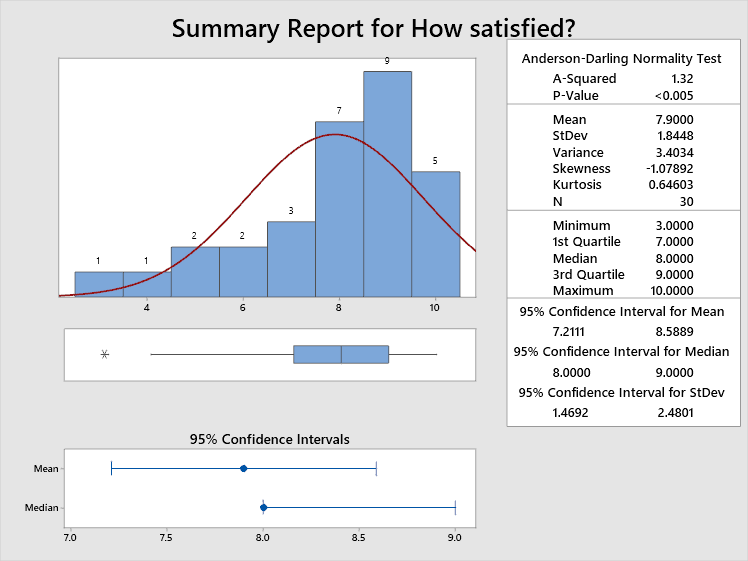
Regression
The results of the multiple regression analysis of customer satisfaction against three independent variables are presented in Figure 3 below. The results revealed that waiting time and conversation time are week predictors of customer satisfaction, while problem resolution variable was statistically significant.
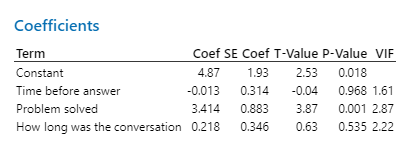
Discussion
The results of the present research are important for several reasons. They confirm that the customer satisfaction level has decreased considerably. As was mentioned in the literature review, the customer satisfaction level in 2003 was 98% (Carvalho, 2003). If we consider that all participants with a satisfaction level above 5 are satisfied, the satisfaction level of customers decreased to 87%.
These findings contradict the statement by Alshehhi (2019), which claimed that the majority of people living in the UAE are dissatisfied with telecom services. At the same time, the findings contradict the claim made by the company that Etisalat is a customer-centric firm. However, it should be considered that the 87% satisfaction rate is among the customers who contacted customer support, which means its ability to represent the tendencies in the entire population is limited.
A considerable decrease in customer satisfaction is a sign that Etisalat does not follow the first lean principle, which is customer focus. According to the model, want the service to be accurate, timely, accessible, effective, low-cost, and respect. However, the company failed to provide the desired value to its customers, as the quality of service is unsatisfactory, and the prices are too high (Alshehhi, 2019). The matter can be explained by the lack of real competition and interventions from the government (Alshehhi, 2019). The results demonstrate that the problem of customer satisfaction needs to be addressed to prevent it from deteriorating.
One of the methods to address the identified problem is to improve the quality of the call centre service. While all the KPIs assessed in the present paper may be crucial for customer satisfaction with the services of the call centre, not all of them are statistically significant for the overall customer satisfaction with the products of the company. The results of the present study revealed that the rate of problem resolution after the call has a significant impact on customer satisfaction. The findings are consistent with claims made by Roos and Edvardsson (2008). The strong influence of problem resolution after contacting the call centre may be explained by the fact that the customers feel cared for and develop loyalty to the company.
The results also revealed that there is much variability in the service provided by the contact centre, which is crucial, according to the Six Sigma approach. An Internet search revealed no service level agreement for Etisalat’s contact centre in UAE. According to ContactCentre Helper (2019), 80% of call should be answered within 20 seconds of waiting time. According to the research findings, only 20% of calls were answered before 30 seconds of waiting time.
Even though it is understandable that the target of Six Sigma (3.4 defects in one million cases) is difficult to achieve in call centre settings, the variation in service level is extremely high, and it needs to be addressed to prevent dissatisfaction of the clients. However, even though the matter is important, it is not as urgent as the improvement of the call resolution rate.
Recommendation
Etisalat recommended applying Lean Six Sigma model to improve the current performance of the call centre as the first step to improving customer satisfaction. In particular, the company should initialize the use of DMAIC process to maintain the culture of constant improvement. The proposed process map is presented in Figure 4 below. According to the methodology, the company should identify the problems, describe how they are addressed currently, evaluate current practices, create an improvement plan, and monitor the progress. The central matter in improvement is to create or update a comprehensive service level agreement and follow it with six-sigma precision. In other words, the process should be carefully documented and controlled. The reduction in variability of service provision is the key to continuous improvement.

Conclusion
Call centre performance is of extreme importance for Etisalat’s customer satisfaction. The present research reveals that the customer satisfaction level of Etisalat decreased considerably. Statistical analysis confirmed that the performance of the company’s call centre has a significant impact on customer satisfaction. Currently, the call centre suffers from a high variation of service level and low call resolution rate.
However, even though the results of the research are statistically significant, their generalizability is limited due to comparatively small sample size. Additionally, the regression model takes into consideration only three KPIs, which implies that the results may be biased. Finally, the collected data is self-reported, which makes it open errors in evaluations. Therefore, additional research is needed to confirm the results of the present research and address its weaknesses.
Appendices
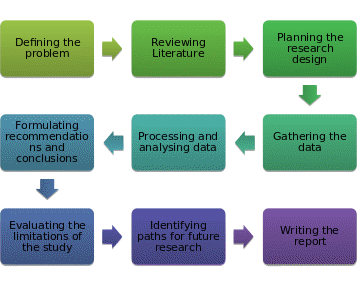

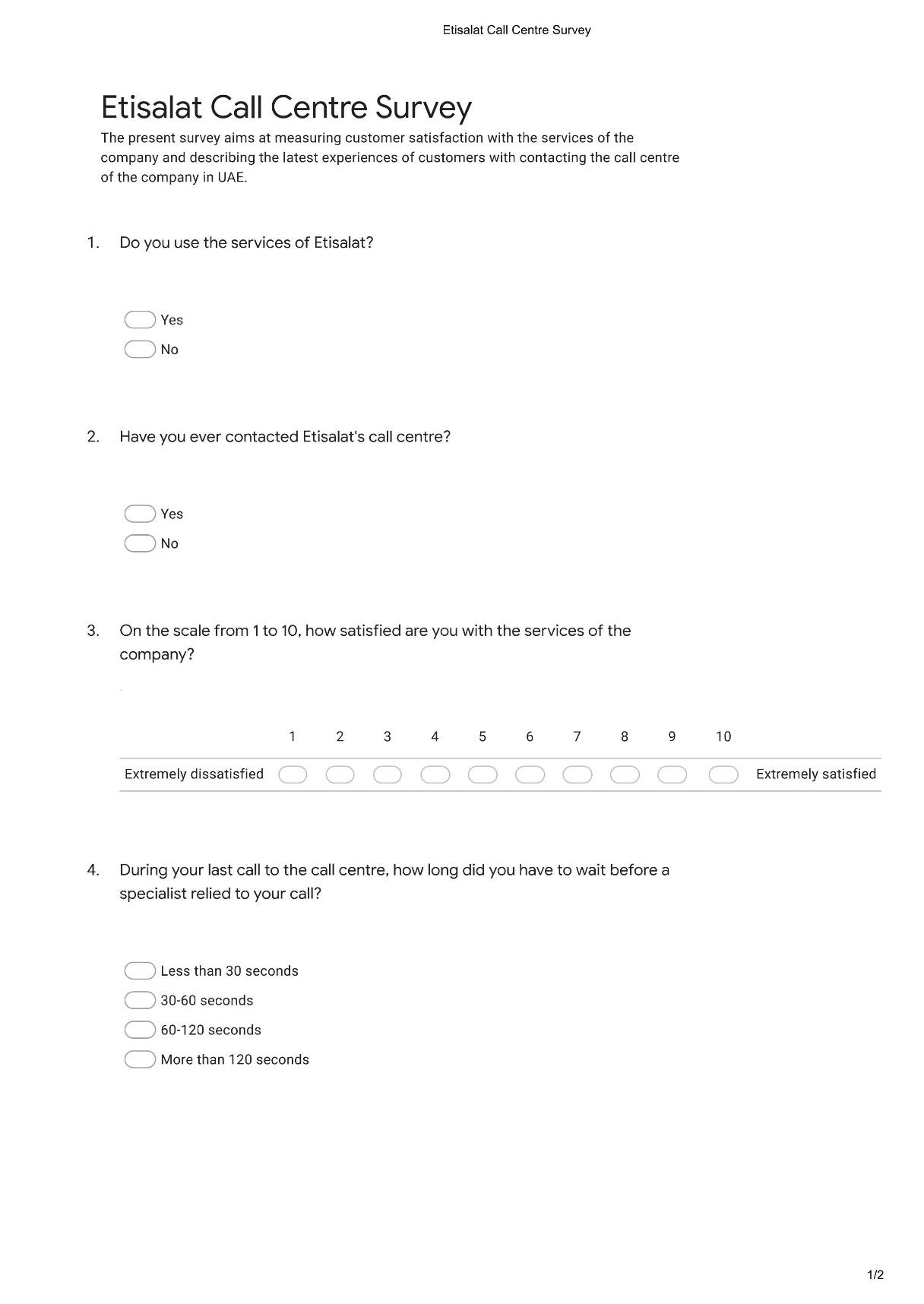

References
Alshehhi, K. (2019). Determinants of customer satisfaction towards Etisalat products and services. Journal of Multidisciplinary Engineering Science and Technology, 6(11), 11018-11021.
Ameen, N., & Willis, R. (2016a). An investigation of the challenges facing the mobile telecommunications industry in the United Arab Emirates from the young consumers’ perspective. 27th European Regional Conference of the International Telecommunications Society (ITS).Cambridge, United Kingdom: International Telecommunications Society.
Ameen, N., & Willis, R. (2016b). Current and future challenges facing the mobile telecommunications industry in the Arab world. The 3rd World Congress on Computer Applications and Information Systems 2016. Dubai, United Arab Emirates: N&N Global Technology.
CallCentre Helper. (2019). What is an acceptable contact centre waiting time?. Web.
Carvalho, S. (2003). Most customers are satisfied with Etisalat’s services. Gulf News. Web.
Ellam, I. (2008). UAE telecoms sector report. Web.
Etisalat. (2016). Annual report 2015. Web.
Etisalat. (2019a). Annual report 2018. Web.
Etisalat. (2019b). Sustainability report 2018. Web.
Goffin, K., & New, C. (2001). Customer support and new product development‐An exploratory study. International Journal of Operations & Production Management, 21(3), 275-301.
Roos, I., & Edvardsson, B. (2008). Customer‐support service in the relationship perspective. Managing Service Quality: An International Journal, 18(1), 87-107.
Zeisig, K. (2020). The 25 must-have KPIs for call centre managers. Web.
